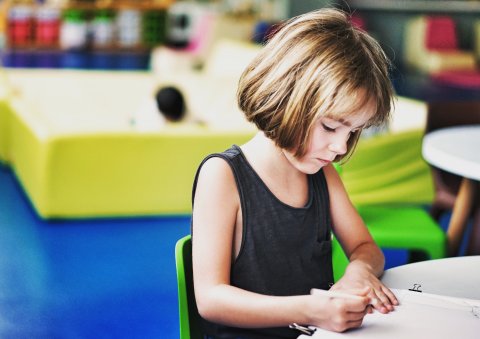The Path to Student-Centered Learning

Today’s students have the world at their fingertips. They can Google anything they don’t know, and are used to constant stimulation. Children and adults spend an average of 5-9 hours a day on devices. So why do educators still try and transmit knowledge in person? Is in person instruction archaic in the digital first era? But many students, from early childhood to adult learners, will say that an in-person experience is remarkably different (and some might say superior) than learning solely through a phone or TV. The way Jewish students learn Chumash (the Five Books of Moses), Navi (Prophets), writing, and science must reflect the many ways 21st century students learn and process content.
Reaching students comes down to student-centered learning. Teaching students is about understanding them, their learning needs and interests. Today, with more distractions than ever looming in the classroom, teachers need to answer two simple questions. Why should learners be interested in classroom content? How do Jewish educators explain, in engaging formats, that subjects like math and Mishna are essential to students’ lives?
There is no question that it has become harder to capture students’ attention in the classroom. With an endless supply of books, videos and courses from around the world online, the way students learn today is vastly different than their parents. Now, students truly are at the center of their educational journeys. Educators can help students navigate their education by modeling inner peace and creating lessons that relate to students culturally and technologically.
The first step to student-centered learning is self-reflection. For children to do this effectively, educators need to practice and model relevant behaviors for them. Teachers should always feel comfortable taking a deep breath and centering themselves. Educators who are healthy, spiritually and emotionally, show learners the importance of leading a mindful life. Maintaining a healthy emotional life is a skill that students can use throughout their lives.
Second, educators need to tinker with their educational practices. Try game-based learning in the classroom. Explore new ways to infuse meaning in tefillah (prayer) that will resonate with students. Students will appreciate these pedagogical changes.
This month, hundreds of teachers are taking some distraction free time (and putting down their phones – at least for a few minutes) at The Jewish Education Project’s Annual Yeshiva Day School Day of Learning to focus on improving teaching, learning, and focus. By tackling important issues such as relationship building and lesson planning, principals, educators, and administrators will have new techniques for promoting student-centered learning. By placing students at the center of instruction, both students and teachers can grow in ways they never imagined.
